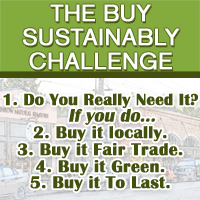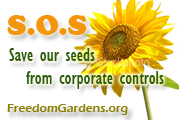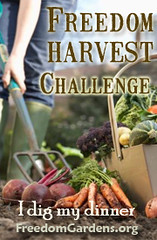I was really excited about writing this blog, but personal situations the last month nearly stopped it in its track. Hopefully though, I’m back for good, and if you’re still reading here, I thank you.
I’ve been playing around with making my own dishwasher and laundry detergent lately. I’m still not satisfied with my dishwasher detergent so far, and have gone back to using the 7th Generation brand, but I am absolutely loving the powdered laundry detergent I’ve made. I usually use liquid detergent, so it’s a bit of a change for us, but making your liquid detergent requires a 5 gallon bucket and I just don’t have room (or the back) for storing it.
I’m a little strange, I think, because I love doing laundry. I love doing it because it takes 2 seconds to load into the washer, then I set it, and go around doing other things until it’s done. I HATE putting it away however, which makes me more normal again.
Americans apparently wash about 35 BILLION pounds of laundry a year. The amount of energy, water and chemicals that are used in this are almost unimaginable! I love my washer and dryer more than any other appliance in the house, and though I do line dry the clothes that need to be, I love using my dryer. Not using it would save lots of energy AND help my pocket financially, but there’s just something about pulling out just dried clothes and putting them on all soft and fluffy that I haven’t be able to give up yet.
So, instead, I have a new laundry detergent that saves me money, is great for the environment, and smells lovely. It only involves three ingredients, a laundry bar, washing soda, and Borax. For extra oompf, you can put in baking soda to deodorize even more and if you want a stronger fragrance, you can optionally add in essential oils. I can’t promise this detergent is completely dye and fragrance free even without the oils though (which I don’t use). The Linda laundry soap is yellow, so I assume it must have some dye, and it smells nice, though not strong at all, so it must have something fragrant in there.
Powdered Laundry Detergent Recipe:
- 1 cup grated laundry bar soap
- 1/2 cup Washing Soda
- 1/2 cup Borax
For light loads, use 1 Tbsp. For heavier loads, use 2 Tbsps.
The first thing you need to do is grate 1 cup of your laundry bar. We found Linda’s Savon de Lavage in a little Italian deli close to us, but you can also use Fels Naptha or a Zote bar (Zote is bright pink, I’m not sure what Fels Naptha looks like). The bar we used was 9.5 oz, and we grated half the bar to get a cup’s worth.
Grate it as small as you can, because it will help it dissolve easier in water later.
I then took a 1/2 cup of Borax and 1/2 cup of Washing Soda and mixed them in with the grated laundry soap.
And voila! Laundry detergent! Hard, isn’t it?
This little bit is supposed to make approximately 22 to 44 loads. The soap bar cost us just under $2, the Borax and Washing Soda about $3 per box, and we only used 1/2 cup each of those. We still have half a bar of the laundry soap left and 3 pounds, 3 oz. of washing soda, and 4lbs, 8 oz. of Borax left. For about $8 dollars, do you know how many loads of laundry that is? Wow!
A little bit about Borax and Washing Soda:
Borax is a natural mineral compound that was first found and used 4000 years ago. It’s odorless and generally white (anything you buy will be white, although in its mined form, it can have color impurities) and is used as a natural laundry booster, multipurpose cleaner, fungicide, preservative, insecticide, herbicide, disinfectant, and dessicant. No wonder it’s been used for so many years.
However, just because it’s natural, doesn’t mean it’s non-toxic. Indeed, it’s been used as an herbicide and kills pests as well. It’s great for cleaning, but you should still keep it away from pets and children.
Washing soda is also known as sodium carbonate. It is different from baking soda, which is sodium *BI*carbonate. It seems like they are very close, but for this recipe you cannot substitute washing soda with baking soda. Washing soda is also known as soda ash, which has been used for cleaning laundry for hundreds of years. It is most definitely caustic, and its high alkalinity helps it act as a solvent to remove a range of stains. It’s good for descaling and binds to the minerals which make water hard, so that detergents foam properly so clothing comes out without any residue.
The beauty of this recipe though, is that it is naturally low-sudsing, so you can use it in HE washers without a problem. In fact, it is only recently due to the Chemical Revolution that cleaners “sud” as much as they do – because manufacturers figured people thought things cleaned better if they were more sudsy. But more suds do not equal more clean!
So give it a shot and whip up a batch of powdered laundry detergent. It’s so easy! Use it with your regular fabric softener for now and leave me a comment letting me know what you think!
Filed under: Green Living | Tagged: 7th Generation, borax, chemical revolution, fels naptha, homemade dishwasher detergent, homemade laundry detergent, laundry bar, linda savon de lavage, washing soda, zote | 4 Comments »




